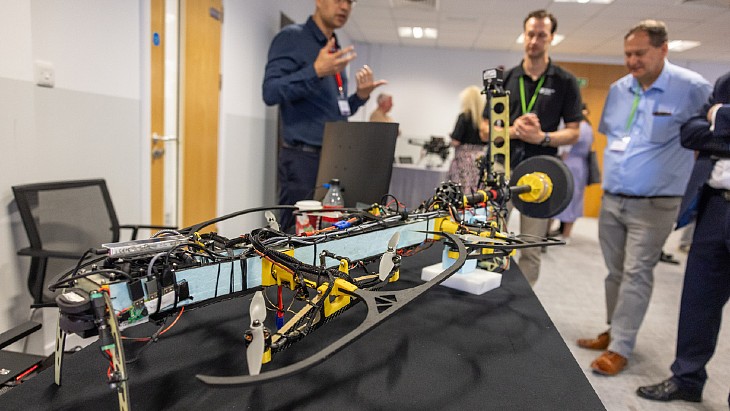The NDA provided the GBP750,000 (USD955,000) of funding for the competition run by DASA "for the development of innovative, next-generation technologies to help monitor and enhance the NDA's ability to autonomously monitor and inspect nuclear sites".
The demonstration event saw participants showcasing their progress in the challenge areas of the built environment and infrastructure; environmental monitoring and land use; and security and resilience.
Andrew Gray, the NDA’s innovation delivery manager, said: "We use innovation and technology to support us in delivering our mission to clean up the UK’s oldest nuclear sites safely, securely and sustainably. These technologies could help us to improve our decision making processes while also moving our people further away from harm and preventing them from needing to be physically present in hazardous environments."
The ten projects demonstrated, with the contest organisers' descriptions of them, were:
Earth-i Limited presented an asset mapping and monitoring system that links multiple data sources, using high resolution satellite Earth Observation data combined with airborne and terrestrial data sources to provide a rich set of information layers to support NDA decision makers.
ANRA Technologies presented their uncrewed mission manager to enable the remote management of autonomous systems for the monitoring of sensitive sites across the NDA estate.
Archangel Imaging showcased its mobile, autonomous AI camera system that can be customised with specific algorithms, like vehicle or people detection, and is interoperable with other devices (e.g. drones), to monitor sites.
Lynkeos Technology Ltd presented their structural monitoring project, which utilises muography, a technique which uses natural radiation to monitor complex structures and assess their integrity, including identifying any voids or any degradation of steel reinforcement bars. This project seeks to develop a portable muography capability for monitoring underground, ageing reinforced concrete infrastructure.
Durham University showcased an autonomous wide-area surveillance camera to detect human and vehicle activity. Through the use of artificial intelligence, it utilises persistent, all-condition sensing coupled with real-time algorithms for remotely monitoring the perimeter of sensitive sites and identify unusual activity.
ISS Aerospace presented an autonomous unmanned aerial system (UAS) with on-board real time AI processing, capable of learning their environment. The UAS is used to respond to environmental changes detected by ground based sensors which can collect data for temperature, humidity, noise, motion, and air quality.
National Physical Laboratory, in collaboration with Metrosol Limited and the University of Manchester, presented their novel thermometer that can replace conventional sensors in harsh environments up to 600°C. The thermometer uses non-invasive electronic Johnson noise (electronic noise generated by thermal agitation) to measure temperature, improving reliability and reducing calibration costs.
Autonomous Devices Limited presented an update on Theia, an aerial robotic Swiss Army knife for contact-based inspection, providing operators with a rapid and highly automated means of deploying sensors and cameras directly onto the most inaccessible parts of a sensitive site.
Telespazio UK Ltd presented their non-intrusive satellite based technology to monitor water related anomalies, providing early insight into risky areas, reducing the need for on-site investigations and supporting informed and timely decision-making.
Decision Lab Ltd presented an update on their project which seeks to use an advanced set of competitively trained reinforcement learning AI agents, AUDI, which can improve site security and resilience through remote sensing.






_91467.jpg)
_47120.jpg)
_16439.jpg)





